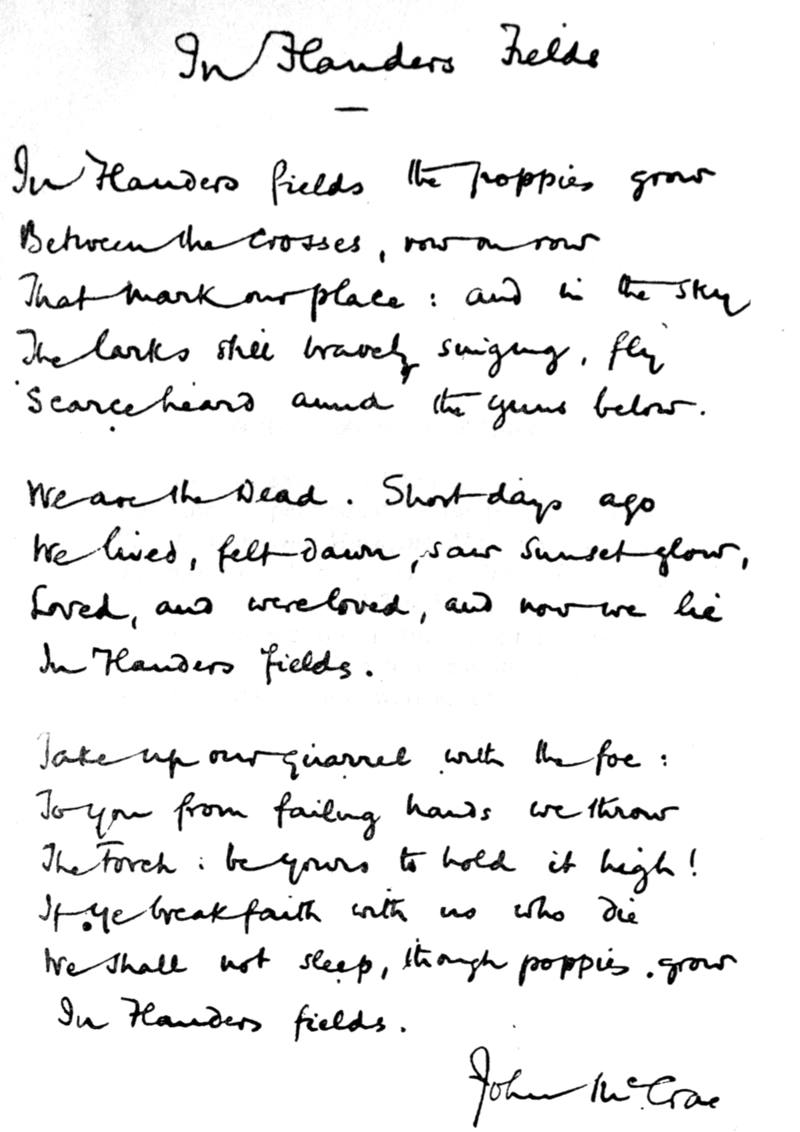The Poppy Appeal funds help us to care and support veterans of World War 2 through to Afghanistan, former as well as current New Zealand Defense Force members, and our service families.
Thank you!
The Poppy
The Poppy is the symbol of remembrance for the fallen and hope for the living.
The story of the Poppy begins on the battlefields of Flanders in Belgium when a Canadian Lieutenant Colonel John McCrae pens a poem on 3 May 1915 in remembrance of a fellow soldier buried the day before.

Amongst the many moved by McCrae’s poem were YMCA representatives Moina Michael from the Unites States and Anna E. Guérin from France. Michael wrote a response in November 1918 while Guérin conceived the idea of widows manufacturing artificial poppies in the war-devastated areas of France and sold by veterans’ organisations overseas, including the New Zealand Returned Soldiers’ Association (as the RSA was originally called), for the benefit of destitute French children and their own veterans.
It was as a result of the efforts of Michael and Guérin – both of whom became known as the “Poppy Lady” – that the Poppy became an international symbol of remembrance.
In New Zealand today, the Poppy is worn at Anzac Days and other commemorative occasions, and is laid at New Zealand war graves and memorials around the world. The Poppy is our national symbol of remembrance. At the same time the Poppy continues to help the RSA to care and support the living – war veterans, former and current service personnel, and their families.

(Sir George Grey Special Collections, Auckland Libraries AWNS-19230503-48-5)
History of Poppy Day
Few charitable appeals can claim the history and public recognition as that of the RSA’s Poppy Day appeal held prior to Anzac Day each April. The Poppy is a Kiwi icon.
In contrast to the United Kingdom, Canada and even Australia, in New Zealand the Poppy is not associated with Remembrance Day in November, but Anzac Day. The reason dates to back to the fact that the ship carrying the poppies sent by the French Children’s League arrived in New Zealand too late for the scheme to be properly publicised prior to Armistice Day (11 November) in 1921, thereby forcing the RSA to postpone its campaign until the day before Anzac Day 1922. This decision established an historic precedent whereby the Poppy and Poppy Day – as the day was known from the outset – became forever associated with Anzac Day in New Zealand.

The first Poppy Day in New Zealand was a great success, with many centres selling out of their supply of poppies early on 24 April 1922. All up, 250,000 poppies were sold for 1 shilling each (the equivalent of $9.20 in 2016) and 15,000 larger silk flowers attracted two shillings each ($18.40), netting the national association £13,166 ($1.25M). Of that sum, £3,695 ($350,000) was sent to the French Children’s League, to help alleviate distress of widows and orphans in the war-ravaged areas of northern France. The remainder of the proceeds were used by the RSA to assist returned soldiers so beginning a tradition as the RSA’s primary means of raising funds to support the needs of the service community.
By 1931 the RSA was producing its own poppies, made by disabled returned soldiers at the Auckland RSA as well as Christchurch RSA, the latter is today the sole producer of the proudly New Zealand-made Poppy.
Today Kiwis can donate online to the Auckland RSA Poppy Appeal.